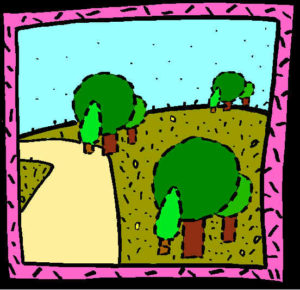 Site Evaluation Articles
Site Evaluation Articles
Slope, Soils, Water & Radon
Clearing the Land
Siting the House
A piece of land that looks gorgeous to the buyer’s eye may look like trouble to an experienced builder. Issues such as soil type, the presence of ledge, high water tables, and poor drainage are just some of the issues that can complicate construction and drive up costs.
SLOPE, SOILS, WATER, AND RADON
Most site problems can be overcome by an experienced builder with a big enough budget, and some can be turned into assets with a little creativity. A moderately sloped site allows for a walk-out basement and can be regraded to a terraced yard. A rock outcropping can become a focal point in landscaping. A low, wet spot may have potential as a year-round pond. But it’s best to go into a project with your eyes open read more
CLEARING THE LAND
You will need to clear land for your house and yard, driveway, well, and septic system. Before clearing the land, check with zoning and building departments (and protective covenants, if they exist) to see if there are any restrictions or permits required. While clear-cutting restrictions in many areas were developed for logging operations, they may apply to you as well read more
Gail says
We are going to be building a garage and our snow is almost all melted. The ground is really wet and has exposed ledge with water on top. The contractor wants to start preparing the ground to have the 6″ slab poured on May 15. Is there anything we should know? Should the ground be dry?
buildingadvisor says
It’s impossible to offer specific advice without visiting the site and seeing the building plans. For example, is this a monolithic slab or built on a stem wall? What type of soil? Are you blasting some of the ledge? Is the garage attached to the house or a standalone structure? However, there are some general issues to consider.
There is nothing wrong with pouring a slab on damp surfaces — in fact, damp soil is ideal as it slows down the concrete curing. However, if the ground is completely saturated or has standing water, it’s generally not recommended. Placing a layer of gravel or crushed stone over the saturated soil would typically solve the problem.
Regarding the ledge, you don’t want to pour concrete onto standing water as it would tend to dilute the concrete mix. However if the mix is stiff enough and there is an escape route for the water, it will generally displace the water and set up correctly.
You also want an escape route for the water so that it does not collect in a pool below the slab. The subsurface should be prepared with drainage rock and PVC drainage pipe so that any water drains safely “to daylight.” I had a house built several years ago in the early spring on saturated, poorly draining soil with a little stream running under the foundation. The foundation contractor placed about 3 feet of compacted drainage stone before pouring the footings and basement slab. The stone was part of a well-designed subsurface drainage system. Surface water was managed with properly graded soil (away from the building) and swales for management of surface water. The basement was dry as a bone, despite the a wet building site near the bottom of a hill — the source of all the water.
There are a few other issues to be concerned about: A slab that is supported partly on ledge and partly on soil could settle unevenly, causing cracking. In many cases, the foundation should be pinned to the ledge with rebar and may need extra reinforcing. If your contractor has experience with all these issues, you will probably be fine. If you are uncertain, you could always hire a geotech engineer to review the foundation plan. These kinds of reviews are usually pretty inexpensive — as in a few hundred dollars — and can provide peace of mind (just get an estimate from the engineer beforehand).
Finally, I’d be a lot more concerned if you were building a house on the slab rather than a garage. Still, it pays to do things right the first time so your concerns are certainly valid and worth discussing with the contractor.